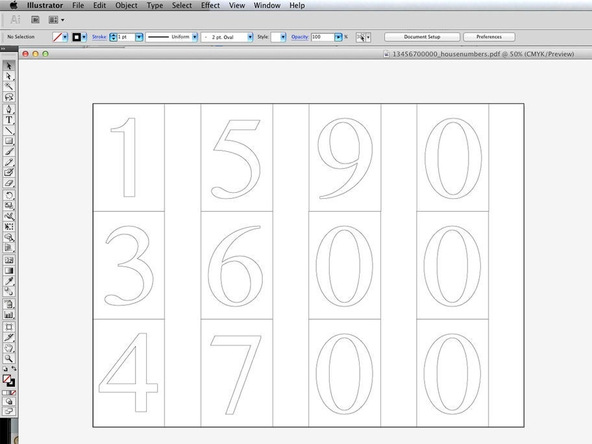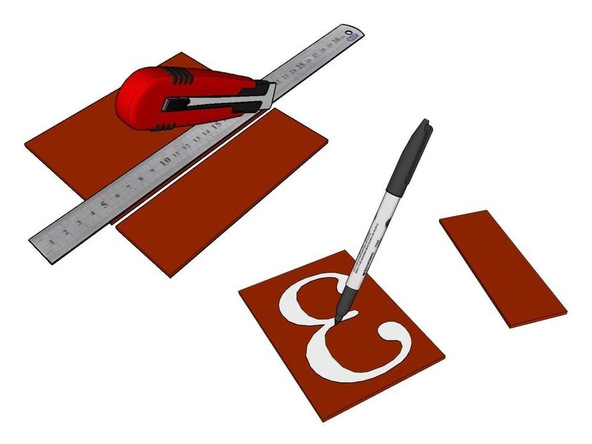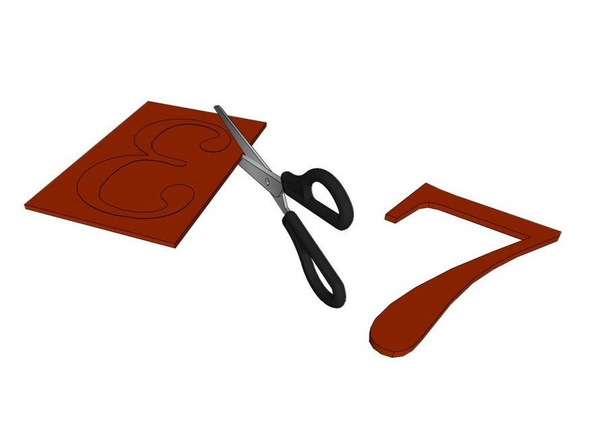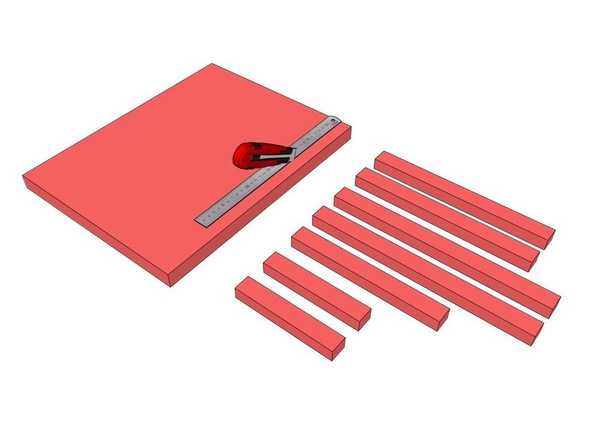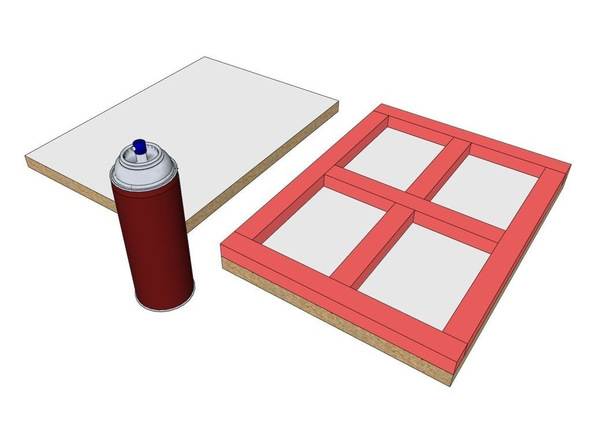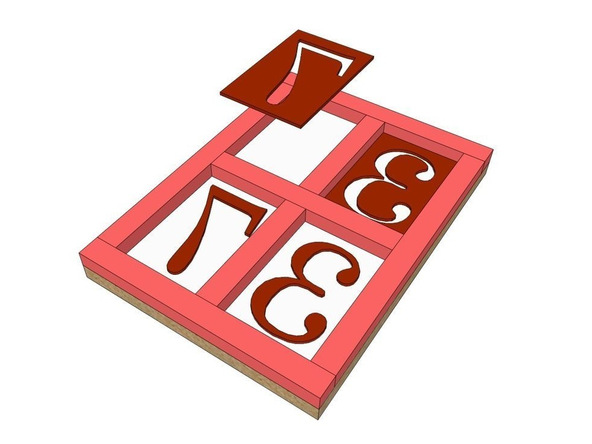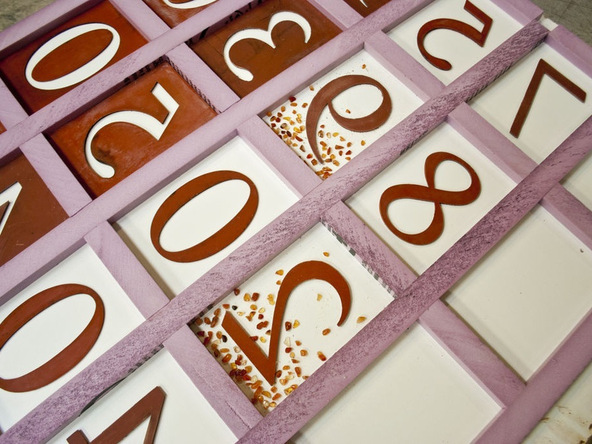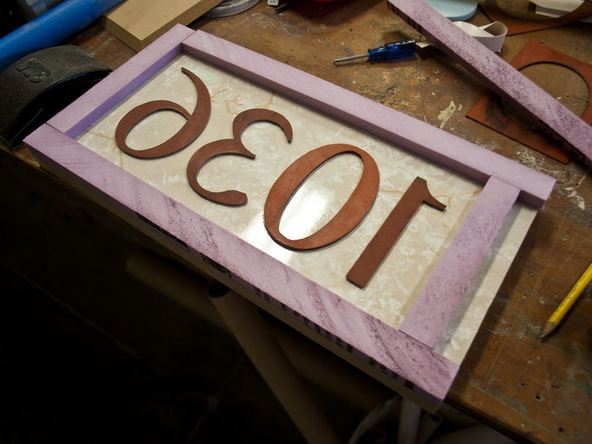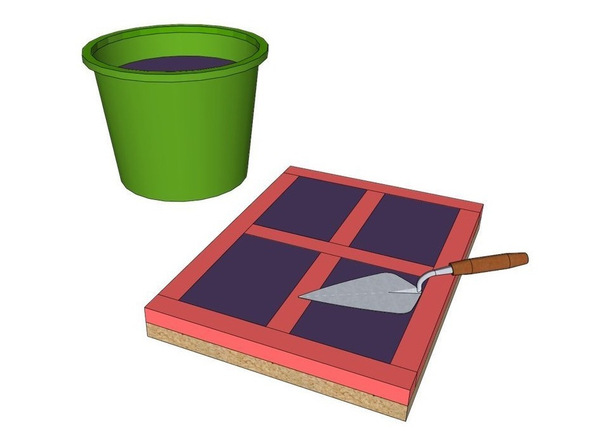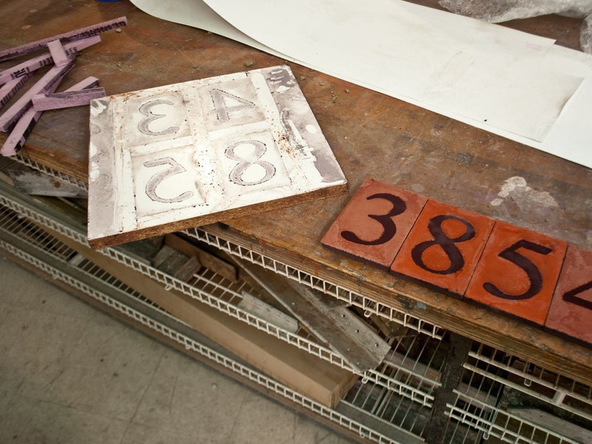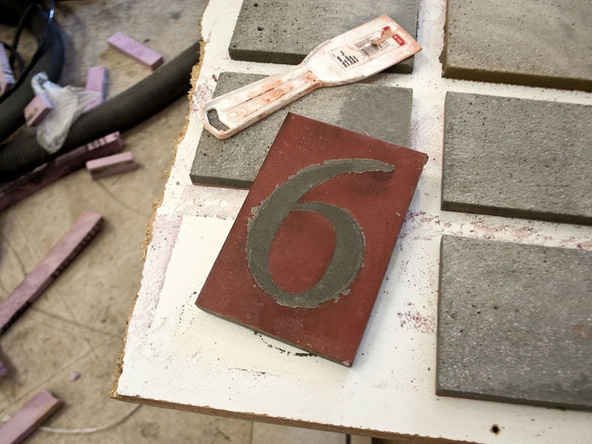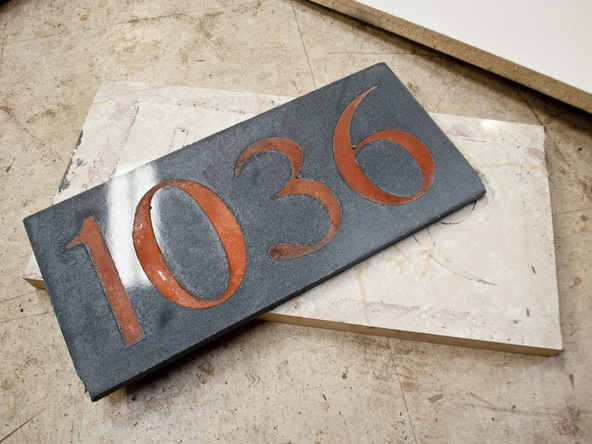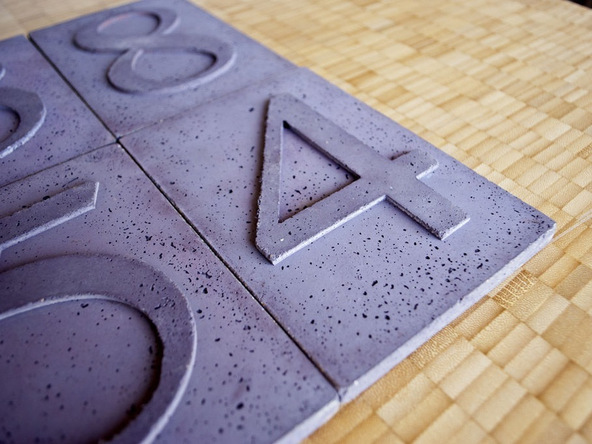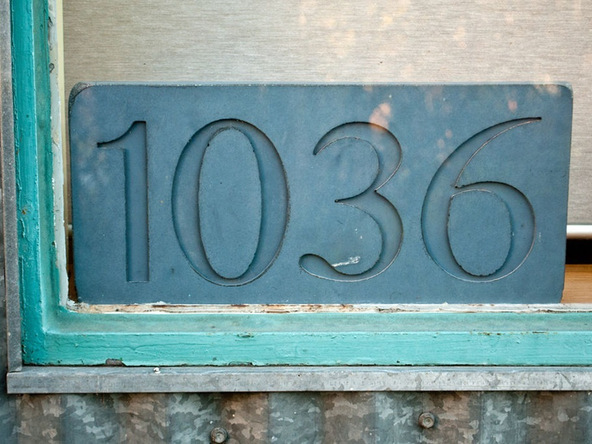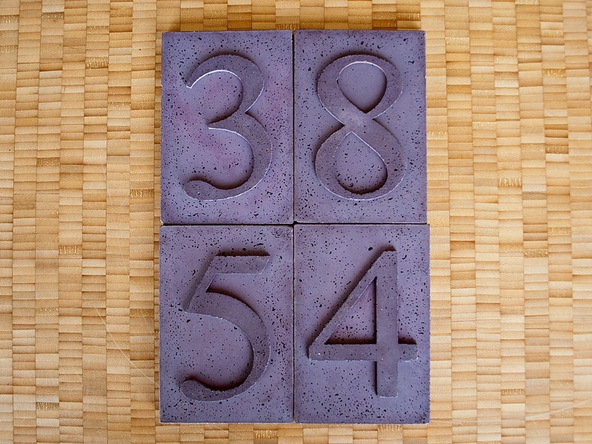To make your own Concrete House Numbers, cut out the numbers from a piece of thick gasket material, glue the numbers to any waterproof surface, build a perimeter form with foam strips, and glue them in place with spray adhesive. That’s it!
You can take this project a step further by lining the form walls with a textured fabric, and also by gluing pieces of broken tile to the top of the gasket numbers. The tile will stay captured in the concrete when the rubber is removed, leaving you with a tile mosaic in the shape of your address.
What You’ll Need
- ShapeCrete Mix
- Ruler
- Permanent Marker
- Utility Knife
- Scissors
- Trowel
- Melamine Baseboard
- Gasket Rubber
- 1″ Styrofoam
- 3M Super 77 Spray Adhesive

